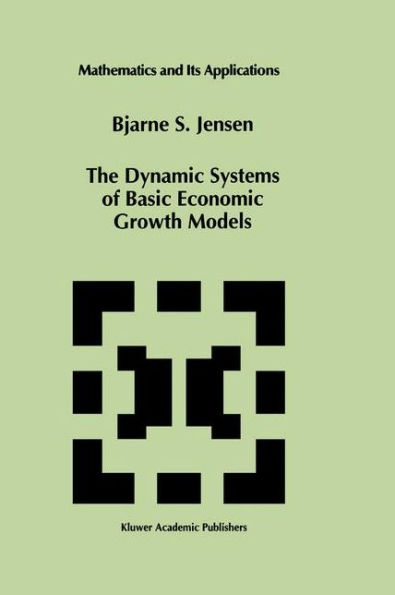The Dynamic Systems of Basic Economic Growth Models
Two central problems in the pure theory of economic growth are analysed in this monograph: 1) the dynamic laws governing the economic growth processes, 2) the kinematic and geometric properties of the set of solutions to the dynamic systems. With allegiance to rigor and the emphasis on the theoretical fundamentals of prototype mathematical growth models, the treatise is written in the theorem-proof style. To keep the exposition orderly and as smooth as possible, the economic analysis has been separated from the purely mathematical issues, and hence the monograph is organized in two books. Regarding the scope and content of the two books, an "Introduction and Over view" has been prepared to offer both motivation and a brief account. The introduction is especially designed to give a recapitulation of the mathematical theory and results presented in Book II, which are used as the unifying mathematical framework in the analysis and exposition of the different economic growth models in Book I. Economists would probably prefer to go directly to Book I and proceed by consult ing the mathematical theorems of Book II in confirming the economic theorems in Book I. Thereby, both the independence and interdependence of the economic and mathematical argumentations are respected.
1117015380
The Dynamic Systems of Basic Economic Growth Models
Two central problems in the pure theory of economic growth are analysed in this monograph: 1) the dynamic laws governing the economic growth processes, 2) the kinematic and geometric properties of the set of solutions to the dynamic systems. With allegiance to rigor and the emphasis on the theoretical fundamentals of prototype mathematical growth models, the treatise is written in the theorem-proof style. To keep the exposition orderly and as smooth as possible, the economic analysis has been separated from the purely mathematical issues, and hence the monograph is organized in two books. Regarding the scope and content of the two books, an "Introduction and Over view" has been prepared to offer both motivation and a brief account. The introduction is especially designed to give a recapitulation of the mathematical theory and results presented in Book II, which are used as the unifying mathematical framework in the analysis and exposition of the different economic growth models in Book I. Economists would probably prefer to go directly to Book I and proceed by consult ing the mathematical theorems of Book II in confirming the economic theorems in Book I. Thereby, both the independence and interdependence of the economic and mathematical argumentations are respected.
109.99
Out Of Stock
5
1

The Dynamic Systems of Basic Economic Growth Models
356
The Dynamic Systems of Basic Economic Growth Models
356Related collections and offers
109.99
Out Of Stock

Product Details
| ISBN-13: | 9780792330912 |
|---|---|
| Publisher: | Springer Netherlands |
| Publication date: | 08/31/1994 |
| Series: | Mathematics and Its Applications , #302 |
| Edition description: | 1994 |
| Pages: | 356 |
| Product dimensions: | 6.10(w) x 9.25(h) x 0.24(d) |
From the B&N Reads Blog
